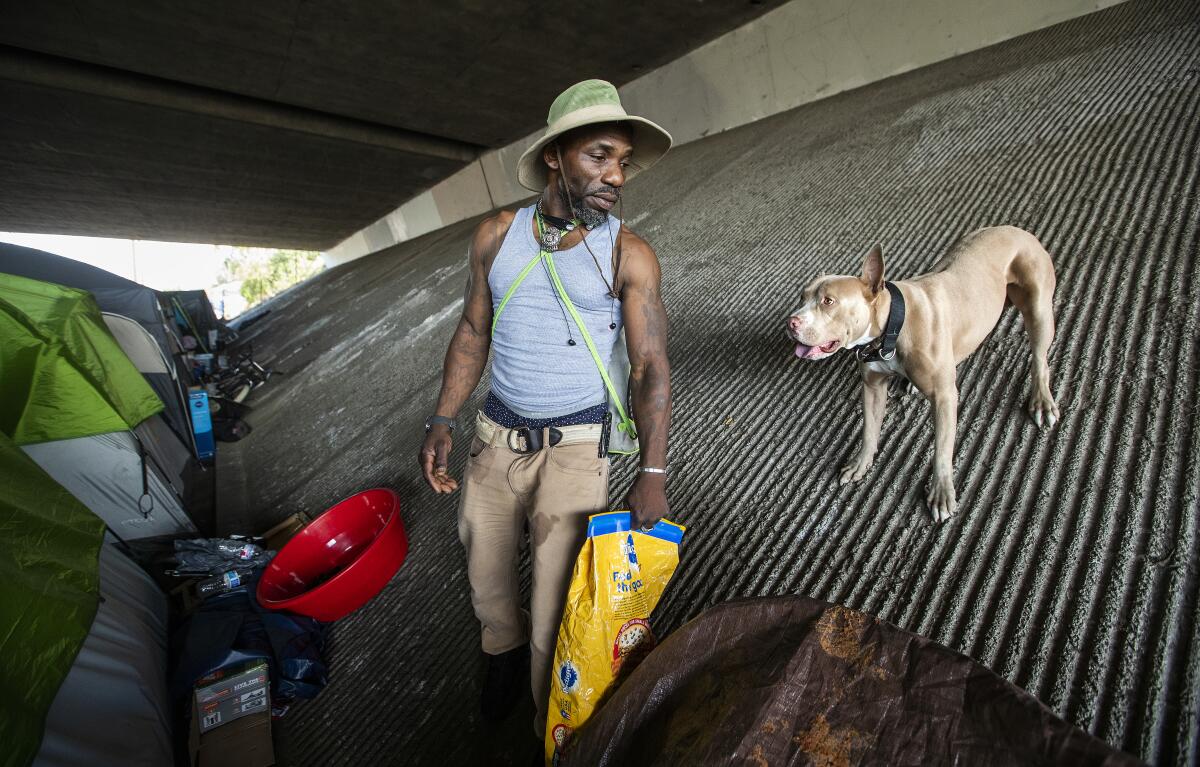Editorial: With Omicron surging, now is not the time to push homeless people into group shelters

When the Los Angeles City Council adopted a sweeping anti-camping ordinance to bar homeless people from sleeping on certain sidewalks and other outdoor locations, the council members vowed to also craft a strategy to offer people temporary housing before forcing them to move.
Over the last several months, council members have proposed that 213 encampment sites in their districts be cleared under the new ordinance. Of those, 143 have been approved. On Wednesday, the City Council is scheduled to consider (and probably approve) dozens more.
The idea of forcing homeless people off one sidewalk only to send them on a search for another — if they turned down whatever offer of shelter was made — has never been a successful way to get them housed. But with the Omicron variant of the coronavirus raging through the county, setting new case records, it’s a bad idea from a public health perspective to move people into crowded shelters.
Ultimately the L.A. City Council’s street engagement strategy is just a cover for enforcing an anti-camping law.
In the week of Dec. 27, there were 448 cases of COVID-19 among homeless people in L.A. County — the highest one-week total since last winter. And more than 140 shelters in the county had experienced an outbreak of COVID (with one or more cases).
Even assuming that there are shelters currently with no outbreaks, there is no assurance that the situation won’t change in a matter of days with this extraordinarily transmissible variant.
Ideally, a homeless person should be offered a room through the Project Roomkey program. But there aren’t enough of those available — and even some of the hotels and motels have had their own problems with outbreaks. The council should stop banning dozens of sites for homeless camping and authorities should hold off on enforcement on the sites they have already designated — at least for now.
So far, there has been no enforcement on designated sites because of the time needed for the city to assess each site, decide where to put up signage and then create and install the signs. Chances are that any sites approved Wednesday wouldn’t see enforcement until February or March because there is such a backlog.
The Centers for Disease Control and Prevention stated in 2020 that if individual housing options are not available, homeless people should be allowed to remain where they are during a pandemic. Now that Omicron is accelerating, that advice should still hold particularly because the rate for full vaccination among homeless people in the county is an estimated 57%, according to the Department of Public Health. That means nearly half the homeless population remains extremely vulnerable to any variant of the coronavirus.
This is a grim situation all around. There are encampments with COVID outbreaks. It’s winter, and it’s cold. There is no perfect solution. But homeless people often do not want to go to shelters even when the weather is bad and there is no pandemic. Given all the factors involved, a homeless person should be allowed to choose to accept an offer of a group shelter or stay put — at least during this bad stretch of the pandemic.
More to Read
A cure for the common opinion
Get thought-provoking perspectives with our weekly newsletter.
You may occasionally receive promotional content from the Los Angeles Times.











